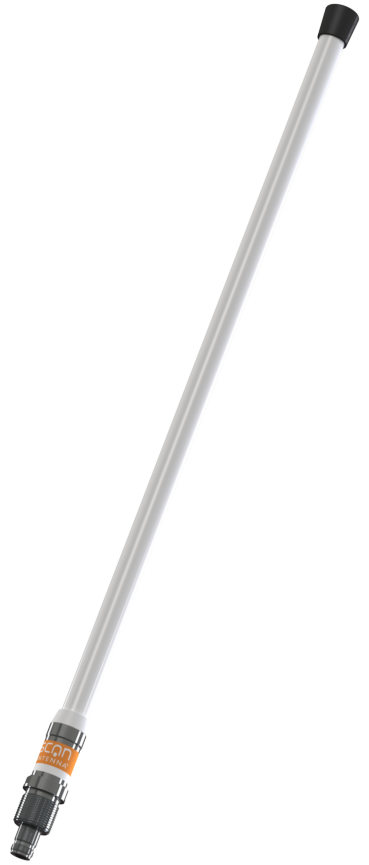Quality, flexibility, and responsibility
Complete Antenna Systems
It’s the Antennas that make the modern world go around, without them global communication wouldn’t exist and most of our technology would be useless.
Everyday millions of people rely and depend on the know-how and care Scan Antenna put into making state-of-the-art solutions. They are a high tech-company making solutions fit for the future – with solid and honest values: Quality, flexibility, and responsibility. They will always make sure we deliver the best in everything we do.


Base Station Antennas
The Base Station antenna defines an antenna which is used to send out a single signal to more receivers.
A base-station antenna is used when wanting to send out a signal to a great number of receivers. This type of antenna serves as a hub of the local wireless network and can be used to both receive and transmit a signal. It communicates out to the many, and simultaneously receives signals from the many. As an example, this antenna could be relevant to a taxi central, as it needs to reach more users.
5G antennas
Scan Antenna provides 5G antennas that make it possible to have multiple input and multiple output. They consist of a large number of antenna elements in order to send and receive a large amount of data simultaneously.
5G antennas have to be able to cover many frequencies. In this way, it becomes possible to achieve faster download speeds. Furthermore, it creates more capacity and connectivity for different devices. More bandwidth makes more data able to get through. With 5G antennas your communication flows more easily.
5G antennas have the ability to be placed outside, as they can resist hard weather conditions. They come with a wireless router.
5G antennas have to be able to cover many frequencies. In this way, it becomes possible to achieve faster download speeds. Furthermore, it creates more capacity and connectivity for different devices. More bandwidth makes more data able to get through. With 5G antennas your communication flows more easily.
5G antennas have the ability to be placed outside, as they can resist hard weather conditions. They come with a wireless router.
Satellite Antenna
With Scan Antennas satellite antenna, you will receive an antenna that works as a data modem, with which the signals are connected to a satellite. The antennas for these modems are ground-based terminals. This type of antenna is suited for communication that runs through satellites. For an example, this could be devices with a GPS feature.
The advantages of a satellite antenna is that you are provided with a more stable global connection. The antenna’s tough setup makes it possible for it to resist even harsh weather conditions, which makes it ideal for the cold and rainy weather in the Northern parts of the world.
The advantages of a satellite antenna is that you are provided with a more stable global connection. The antenna’s tough setup makes it possible for it to resist even harsh weather conditions, which makes it ideal for the cold and rainy weather in the Northern parts of the world.
Marine Antennas
The main function of a marine antenna is to make sure the user is safe when traveling long distances across the ocean. Therefore, as an important feature, these types of antennas are developed to resist the hard weather conditions that may occur on the water. In addition, they are resistant to saltwater in order to be efficient throughout your crossing.
They are built to be able to handle a maritime climate in order to communicate without interruptions in case of emergencies or other situations.
Omni-Directional Antenna
With an Omni-Directional antenna, the signals are sent out in every direction. Therefore, this type of antenna is especially ideal for mobile phones or similar devices that needs to be able to transmit messages at all times in and different directions.
Users constantly move their device, which is why the antenna must be flexible regarding the direction, in which the signal can be received. In this way, the antenna becomes more stable, as there are greater chances that the signal is received by another antenna.
Users constantly move their device, which is why the antenna must be flexible regarding the direction, in which the signal can be received. In this way, the antenna becomes more stable, as there are greater chances that the signal is received by another antenna.
Mobile antenna
Mobile antennas have multiple advantages. They are best suited for moving devices, from which you need to be able to communicate while moving around.
Mobile antennas could for example be placed on cars, trucks or other moving devices in order to keep the communication stable during the movement. Furthermore, an advantage is that they are able to resist different kind of weather conditions.
HF, VHF & UHF antenna
The three types of antennas mainly differ in their reaching distance.
HF Antenna
With High Frequency antennas you get a relatively large antenna. They are up to 9 metres long, which makes it possible for them to have a range of more than 100 kilometres.
VHF Antenna
Very High Frequency antennas are not as large as HF antennas. However, they can transmit more data within a smaller range of kilometres.
UHF Antenna
The Ultra High Frequency antenna makes it possible to send a large amount of data. It does so within a relatively short distance but needs more power to transmit the data. UHF antennas are 5 to 10 cm long and are often used for mobile devices.

![Logo image (function(w, d, s, l, i) { w[l] = w[l] || []; w[l].push({ 'gtm.start': new Date().getTime(), event: 'gtm.js' }); var f = d.getElementsByTagName(s)[0], j = d.createElement(s), dl = l != 'dataLayer' ? '&l=' + l : ''; j.async = true; j.src = 'https://www.googletagmanager.com/gtm.js?id=' + i + dl; f.parentNode.insertBefore(j, f); })(window, document, 'script', 'dataLayer', 'GTM-NXWTJKK');](/content/files/images/airsyseurregularlogo.png)

